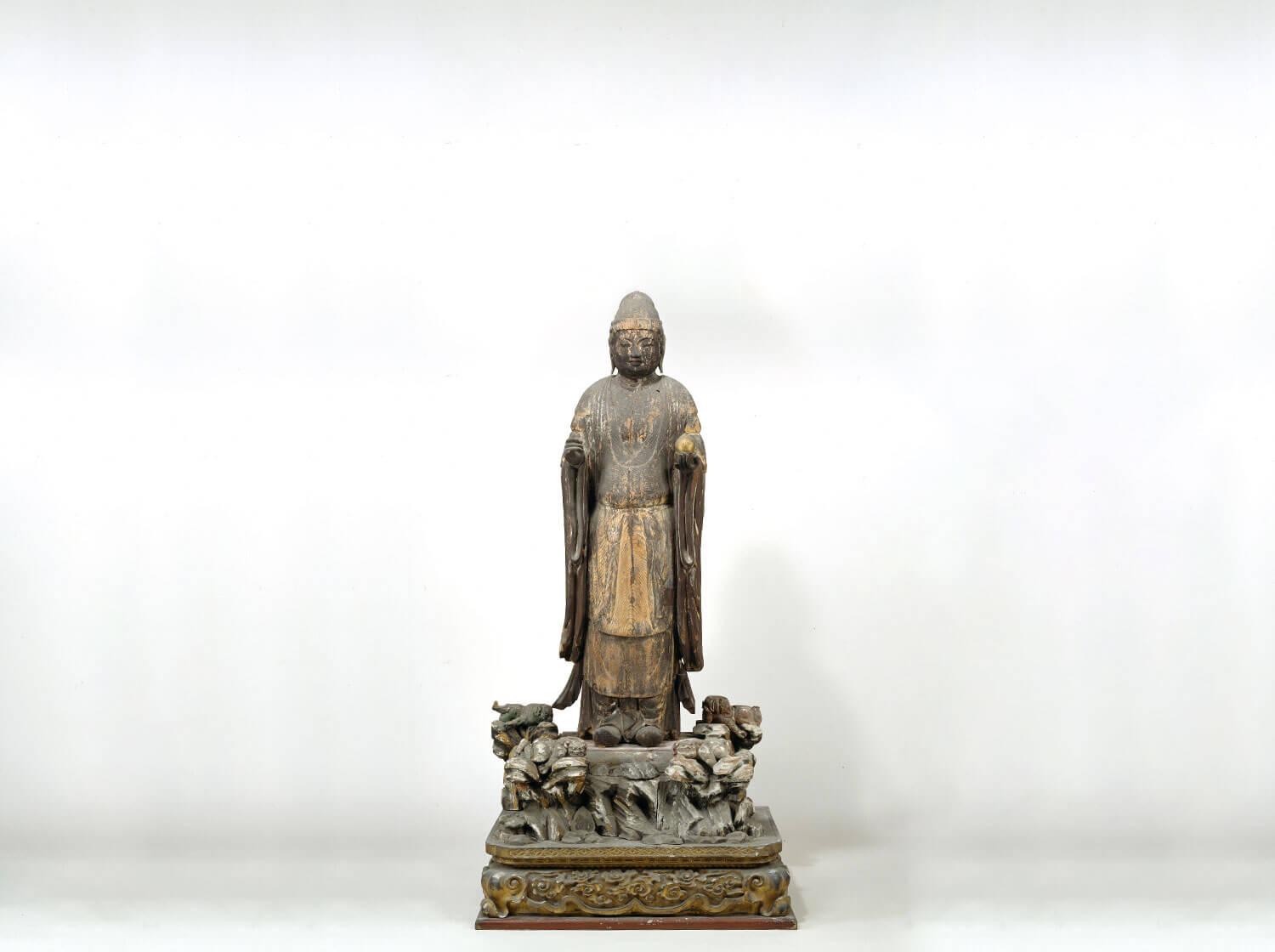Statue of Taishakuten

The chief of a class of beings called devas in Buddhist cosmology, Taishakuten was originally a Hindu deity later incorporated into Buddhism as a guardian figure, shielding both humans and supernatural beings from evil. Taishakuten rules the Four Heavenly Kings (Shitenno) who guard the four points of the compass against malicious forces. These kings—Jikokuten, Zochoten, Komokuten, and Tamonten—are represented on the statue’s pedestal.
The statue of Taishakuten was probably once covered in lacquer and gold leaf. Based on its mild expression, full cheeks, and shallow carving, scholars believe it was made in the first half of the eleventh century, before Byodoin was built. Its head, shoulders, and upper arms were carved from a single block of cypress, and the sleeves and hands were fashioned separately. Being hollow, it may have once contained treasures, a common practice in Buddhist statuary. In contrast to the simple design of the statue, the pedestal is ornately carved. It was fashioned in the Edo period (1603–1867). The pedestal features the Four Heavenly Kings in their dwelling place at Mt. Shumisen, a great mountain at the center of the world in Buddhist and Hindu belief.

